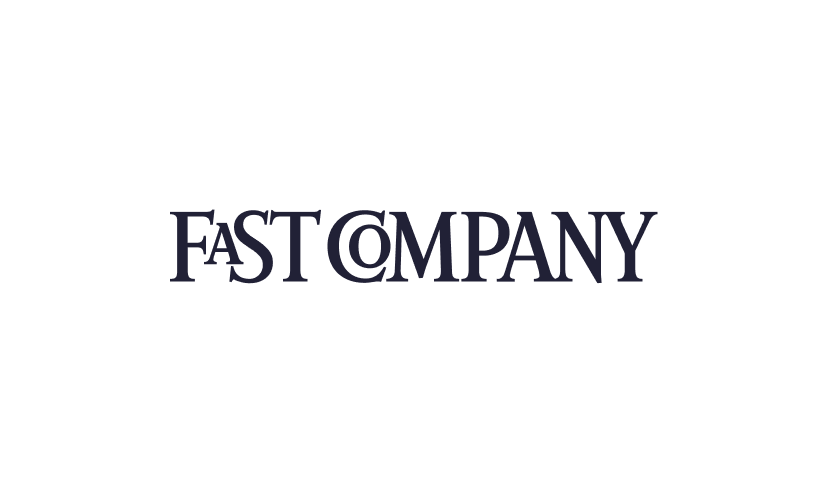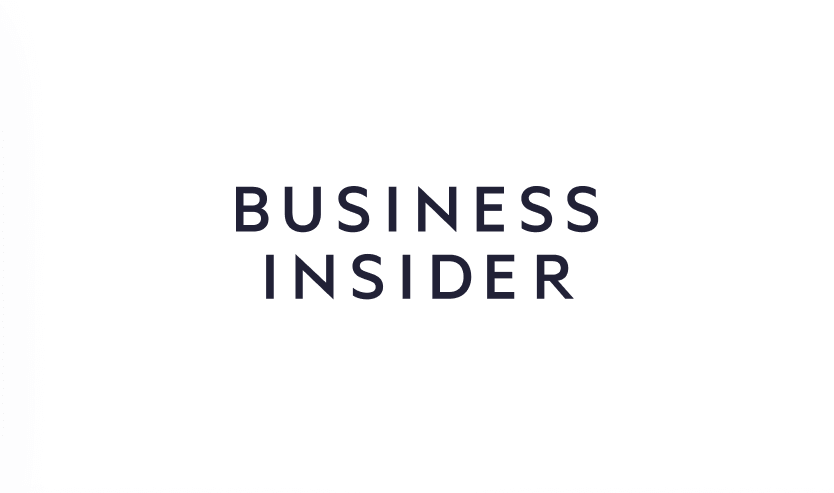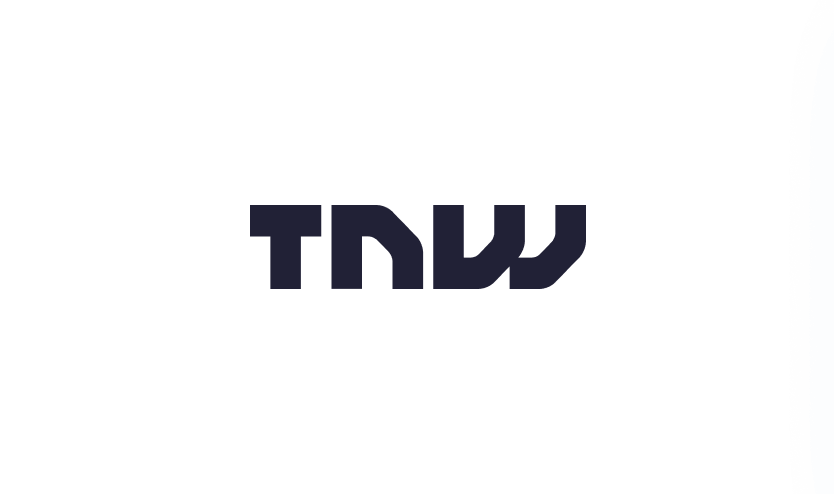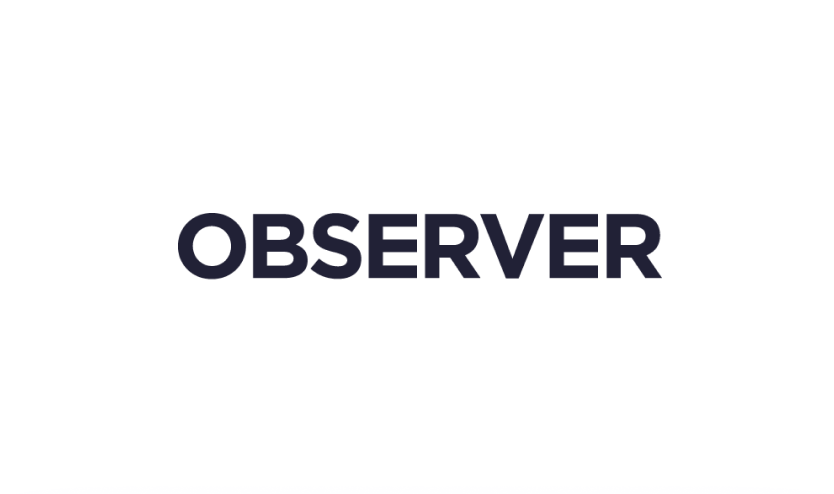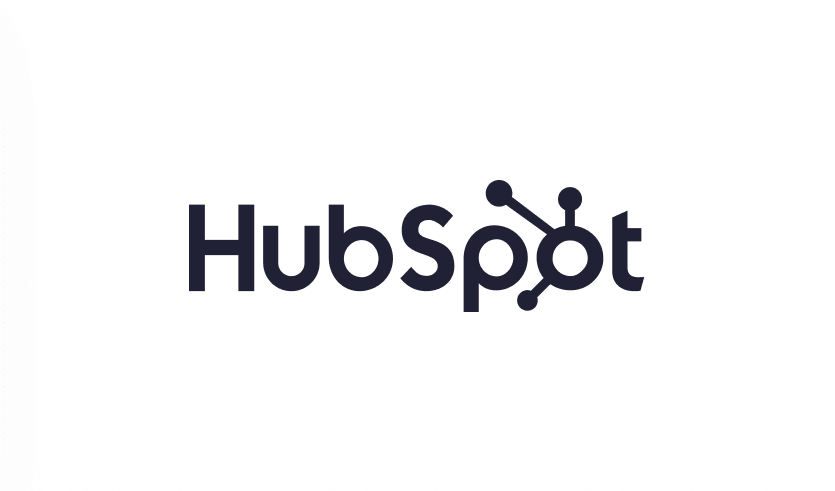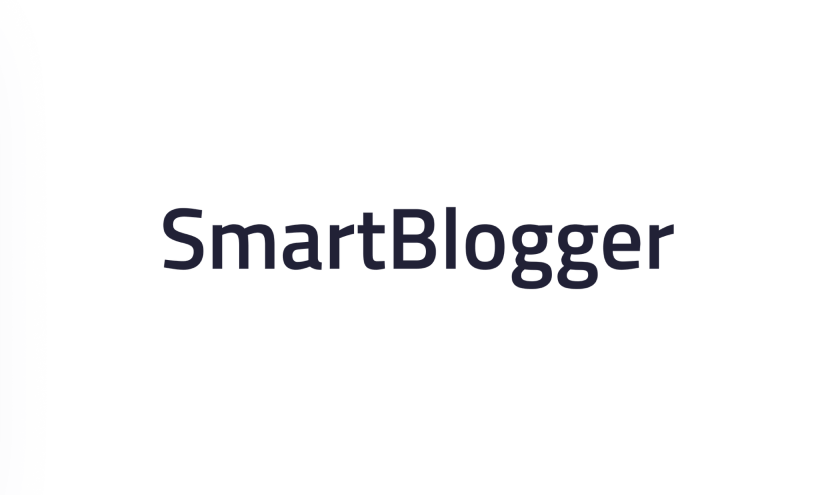Newsletter Email Examples: 25+ High-Performing Templates That Drive Engagement
Email newsletters are the backbone of successful digital marketing strategies, generating an average ROI of $36 for every $1 spent. Yet most brands struggle to create newsletters that subscribers actually want to open, read, and act on.
The difference between newsletters that get ignored and those that drive real business results often comes down to execution, format, and understanding what your audience truly values.
I'm Chase Dimond, and over my career managing $200+ million in eCommerce email campaigns for 7-figure, 8-figure, and 9-figure brands, I've seen what separates mediocre newsletters from exceptional ones. The best newsletters don't just share updates—they build relationships, drive revenue, and create loyal communities.
In this comprehensive guide, I'll share 25+ newsletter email examples that actually perform, break down what makes them effective, and show you how to implement these strategies in your own business. Plus, I'll reveal how top brands use competitive intelligence tools like Inboox.ai to analyze competitor newsletters and create content that stands out in crowded inboxes.
What Are Newsletter Emails?
Newsletter emails are regular communications sent to subscribers containing curated content, updates, insights, or offers. Unlike transactional or promotional emails, newsletters focus on building ongoing relationships through consistent value delivery.
The best newsletters achieve 40-50% open rates and 5-10% click-through rates, far exceeding typical email campaign benchmarks. They're opened more, shared more, and generate more long-term customer value than one-off promotional blasts.
Why Newsletter Emails Work
Newsletters are uniquely powerful for several reasons:
Expectation and consistency: Subscribers know when to expect your content
Relationship building: Regular touchpoints strengthen brand affinity
Authority positioning: Establishes expertise and thought leadership
Multi-purpose vehicle: Can educate, entertain, and convert simultaneously
Owned audience: Direct communication channel you control
Throughout my work with 7-figure, 8-figure, and 9-figure eCommerce brands, I've found that brands with strong newsletter strategies see 3-5x higher customer lifetime value compared to those that only send promotional emails.
The Anatomy of a High-Performing Newsletter
Before diving into specific examples, let's break down the essential elements that make newsletters succeed:
1. Compelling Subject Line
Your subject line determines if your newsletter gets opened. The best newsletter subject lines either:
Create curiosity without clickbait ("3 things I learned this week")
Deliver clear value ("Your weekly marketing insights")
Use pattern interruption ("This surprised me...")
Include personalization ("[Name]'s weekly roundup")
2. Consistent Sender Identity
Use the same "from" name and email address every time. Subscribers should instantly recognize your newsletter in their inbox.
3. Scannable Format
Most people skim newsletters. Make yours easy to scan:
Clear section headers
Short paragraphs (2-3 sentences max)
Bullet points for lists
Visual hierarchy with formatting
Strategic white space
4. Valuable Content Mix
The best newsletters balance:
Educational content (70%)
Entertainment or inspiration (20%)
Promotional content (10%)
5. Strong Call-to-Action
Every newsletter should guide readers toward one primary action:
Read full article
Shop a collection
Reply with feedback
Share with others
Register for event
6. Personal Voice
Newsletters should feel like they're from a person, not a corporation. Use "I" and "you" language, share opinions, and inject personality.
25+ Newsletter Email Examples That Perform
Let me walk you through the most effective newsletter formats I've seen across thousands of campaigns. These templates have generated millions in engagement and revenue.
Example 1: The Curated Links Newsletter
Subject: 5 things worth reading this week
Why it works: Curated content saves subscribers time and positions you as a trusted filter. Perfect for busy professionals.
Newsletter structure:
Hey [First Name],
Here are 5 things I found valuable this week:
━━━━━━━━━━━━━━━━━
1. [Article Title]
[Brief 2-3 sentence summary of what it's about and why it matters]
[Read more →]
2. [Article Title]
[Brief summary highlighting key takeaway]
[Read more →]
3. [Article Title]
[Quick explanation of relevance to your audience]
[Read more →]
4. [Article Title]
[Why this stood out and what readers will learn]
[Read more →]
5. [Article Title]
[Value proposition and key insight]
[Read more →]
━━━━━━━━━━━━━━━━━
What did you find most interesting? Hit reply and let me know.
[Name]
P.S. - [Optional promotion or additional note]
Key takeaway: Curated newsletters work when your summaries are genuinely helpful. Don't just share links—add your perspective on why they matter.
Example 2: The Personal Essay Newsletter
Subject: What I learned from [experience/event]
Why it works: Personal stories create emotional connections and are highly shareable. Great for thought leaders and personal brands.
Newsletter structure:
Hey [First Name],
[Engaging opening hook—start with a scene, question, or surprising statement]
[Personal story—3-5 paragraphs telling a narrative with a clear beginning, middle, and end. Include sensory details, emotions, and vulnerability.]
Here's what this taught me:
• [Lesson 1 with explanation]
• [Lesson 2 with explanation]
• [Lesson 3 with explanation]
How does this apply to you?
[2-3 paragraphs connecting the story to your reader's life/business, making it actionable]
[Clear CTA related to the lesson]
Talk soon,
[Name]
P.S. - [Personal note or question to encourage replies]
Key takeaway: Personal essays work when they're authentic and provide transferable lessons. Vulnerability builds connection.
Example 3: The Listicle Newsletter
Subject: 7 [topic] tips that changed how I [outcome]
Why it works: Lists are scannable, actionable, and easy to consume. High engagement format for tactical content.
Newsletter structure:
Hey [First Name],
I've spent [timeframe] learning [topic]. Here are the 7 most impactful lessons:
1️⃣ [Tip Title]
[2-3 sentences explaining the tip and why it matters]
Example: [Specific example or application]
2️⃣ [Tip Title]
[Explanation with tactical details]
Pro tip: [Additional insight or warning]
3️⃣ [Tip Title]
[Practical advice with clear benefit]
Result: [What happens when you implement this]
4️⃣ [Tip Title]
[Actionable recommendation]
Why it works: [Brief explanation of mechanism]
5️⃣ [Tip Title]
[Specific tactic with implementation details]
6️⃣ [Tip Title]
[Strategic insight with context]
7️⃣ [Tip Title]
[Final powerful tip with clear action step]
Which tip will you implement first? Reply and let me know.
[Name]
P.S. - Want to go deeper? [Link to relevant resource/product]
Key takeaway: Listicles work when each item provides standalone value. Don't just create list items—make each one genuinely useful.
Example 4: The Product Showcase Newsletter
Subject: New arrivals you'll love
Why it works: Product-focused newsletters drive direct revenue when done right. Balance selling with storytelling.
Newsletter structure:
Hey [First Name],
Our latest collection just dropped, and I'm genuinely excited about these pieces.
━━━━━━━━━━━━━━━━━
[FEATURED PRODUCT 1]
[High-quality product image]
[Product Name] - $[Price]
[2-3 sentences about what makes this product special—not just features, but the story, inspiration, or unique benefit]
[Shop Now Button]
━━━━━━━━━━━━━━━━━
[FEATURED PRODUCT 2]
[Product image]
[Product Name] - $[Price]
[Compelling product story focusing on customer benefit]
[Shop Now Button]
━━━━━━━━━━━━━━━━━
[FEATURED PRODUCT 3]
[Product image]
[Product Name] - $[Price]
[Unique angle on why this product matters]
[Shop Now Button]
━━━━━━━━━━━━━━━━━
Why customers are loving this collection:
⭐⭐⭐⭐⭐ "[Customer quote]" - [Name]
⭐⭐⭐⭐⭐ "[Customer quote]" - [Name]
[Shop Full Collection Button]
Questions? Hit reply—we're here to help.
[Brand Team]
Key takeaway: Product newsletters should tell stories, not just list features. Help customers imagine using the product.
Example 5: The Educational Deep-Dive Newsletter
Subject: How to [achieve specific outcome]: Complete guide
Why it works: In-depth educational content builds authority and trust. Perfect for complex topics or high-consideration purchases.
Newsletter structure:
Hey [First Name],
Today I'm breaking down [topic]—everything you need to know to [outcome].
━━━━━━━━━━━━━━━━━
THE PROBLEM
━━━━━━━━━━━━━━━━━
[2-3 paragraphs establishing the problem, why it matters, and current challenges]
━━━━━━━━━━━━━━━━━
THE SOLUTION
━━━━━━━━━━━━━━━━━
Here's the step-by-step approach:
STEP 1: [Action Title]
[Detailed explanation with specific tactics]
[Why this matters and what to avoid]
STEP 2: [Action Title]
[Comprehensive guidance with examples]
[Common mistakes to avoid]
STEP 3: [Action Title]
[Practical implementation details]
[Expected results and timeline]
STEP 4: [Action Title]
[Advanced tactics and optimization tips]
━━━━━━━━━━━━━━━━━
KEY TAKEAWAYS
━━━━━━━━━━━━━━━━━
• [Summary point 1]
• [Summary point 2]
• [Summary point 3]
Ready to implement this?
[Relevant CTA to product, service, or resource]
Questions? Reply to this email.
[Name]
Key takeaway: Educational newsletters build trust and position you as an expert. Make content genuinely comprehensive and actionable.
Example 6: The Behind-the-Scenes Newsletter
Subject: Behind the scenes: [project/process/story]
Why it works: Transparency builds trust and makes subscribers feel like insiders. Great for brand building.
Newsletter structure:
Hey [First Name],
Ever wonder what goes into [process/product/project]?
Let me pull back the curtain...
[Compelling opening that creates curiosity]
[3-5 paragraphs sharing behind-the-scenes story with:]
- Specific details that feel exclusive
- Challenges and how you overcame them
- Human moments and personalities
- Photos or visuals if available
- Lessons learned
Here's what surprised me most:
[Interesting insight or unexpected learning]
What this means for you:
[Connect the behind-the-scenes story to customer value]
Want to see more behind-the-scenes content? [Poll or link to follow on social]
[Name]
P.S. - [Related product/offer that ties to the story]
Key takeaway: Behind-the-scenes content works when it's genuinely revealing. Share real stories, not marketing spin.
Example 7: The Q&A Newsletter
Subject: You asked, I answered: [topic] Q&A
Why it works: Addressing real subscriber questions builds community and provides highly relevant content.
Newsletter structure:
Hey [First Name],
You sent me amazing questions about [topic]. Here are my answers:
━━━━━━━━━━━━━━━━━
Q: [Actual subscriber question]
A: [Comprehensive answer with specific advice, examples, and actionable takeaways—3-4 paragraphs]
━━━━━━━━━━━━━━━━━
Q: [Another subscriber question]
A: [Detailed response addressing the specific situation and providing broader applicable lessons]
━━━━━━━━━━━━━━━━━
Q: [Third question]
A: [Thorough answer with tactical recommendations]
━━━━━━━━━━━━━━━━━
Have more questions? Hit reply and I'll answer them in a future newsletter.
[Name]
P.S. - Want help with [related topic]? Check out [resource/product]: [Link]
Key takeaway: Q&A newsletters work when you answer questions thoroughly and make answers useful to the broader audience.
Example 8: The Weekly Roundup Newsletter
Subject: This week: [3-4 topics covered]
Why it works: Consistent weekly digest format creates habit and expectation. Easy to produce and highly anticipated.
Newsletter structure:
Hey [First Name],
Happy [Day]! Here's what's happening this week:
━━━━━━━━━━━━━━━━━
📰 WHAT'S NEW
━━━━━━━━━━━━━━━━━
[Update 1: Company news, product launch, or announcement]
[2-3 sentences with link to learn more]
━━━━━━━━━━━━━━━━━
💡 TIP OF THE WEEK
━━━━━━━━━━━━━━━━━
[One actionable tip with explanation and application]
[Quick win readers can implement immediately]
━━━━━━━━━━━━━━━━━
📖 WORTH READING
━━━━━━━━━━━━━━━━━
[Article/resource recommendation]
[Why it's valuable and key takeaway]
[Read more →]
━━━━━━━━━━━━━━━━━
🛍️ FEATURED THIS WEEK
━━━━━━━━━━━━━━━━━
[Product/content highlight]
[Brief description and benefit]
[CTA button]
━━━━━━━━━━━━━━━━━
That's it for this week! See you next [Day].
[Name]
P.S. - [Personal note or question]
Key takeaway: Roundup newsletters succeed through consistency and variety. Keep the format predictable but the content fresh.
Example 9: The Case Study Newsletter
Subject: How [Customer] achieved [impressive result]
Why it works: Customer success stories provide social proof and demonstrate tangible value. Highly persuasive for prospects.
Newsletter structure:
Hey [First Name],
Let me share a customer success story that really impressed me.
THE CHALLENGE:
[Customer/Company name] was struggling with [specific problem].
They had tried [previous solutions] but were still facing [pain points].
THE SOLUTION:
That's when they discovered [your product/service/approach].
Here's exactly what they did:
• [Step 1 with specific details]
• [Step 2 with implementation tactics]
• [Step 3 with key strategies]
THE RESULTS:
After [timeframe], here's what happened:
✓ [Metric 1]: [Specific number/percentage improvement]
✓ [Metric 2]: [Quantifiable result]
✓ [Metric 3]: [Impressive outcome]
"[Compelling quote from customer about their experience and results]"
- [Customer Name, Title]
WHAT YOU CAN LEARN:
[3-4 paragraphs extracting lessons and tactics that readers can apply to their own situations]
Want similar results?
[CTA related to the solution]
[Name]
Key takeaway: Case studies work when they're specific, quantified, and provide actionable lessons readers can apply.
Example 10: The Story-Driven Newsletter
Subject: The story behind [product/brand/decision]
Why it works: Narrative storytelling creates emotional engagement and makes content memorable and shareable.
Newsletter structure:
Hey [First Name],
Every [product/decision/brand element] has a story.
Here's one I haven't shared before...
[Compelling narrative—5-8 paragraphs with:]
- Strong opening hook
- Vivid scene-setting
- Character development
- Conflict or challenge
- Resolution
- Emotional resonance
- Clear lesson or insight
The point isn't just the story itself.
It's this:
[2-3 paragraphs connecting the narrative to a broader truth or lesson relevant to your audience]
How does this resonate with you? Hit reply and share your story.
[Name]
P.S. - [Related offer or content that extends the story]
Key takeaway: Story-driven newsletters create the deepest emotional connections. Use narrative structure and authentic vulnerability.
Example 11: The Data-Driven Newsletter
Subject: We analyzed [X] [items] and here's what we found
Why it works: Original research and data analysis position you as an authority and generate media coverage and backlinks.
Newsletter structure:
Hey [First Name],
We just completed a study analyzing [X number] of [subject].
The results surprised us.
━━━━━━━━━━━━━━━━━
THE METHODOLOGY
━━━━━━━━━━━━━━━━━
[Brief explanation of what you analyzed and how]
━━━━━━━━━━━━━━━━━
KEY FINDINGS
━━━━━━━━━━━━━━━━━
Finding #1: [Insight with supporting data]
• [Specific statistic]
• [What this means]
• [Why it matters]
Finding #2: [Discovery with numbers]
• [Data point]
• [Context and comparison]
• [Practical implication]
Finding #3: [Surprising result]
• [Quantified finding]
• [Analysis of why]
• [Action readers should take]
━━━━━━━━━━━━━━━━━
WHAT THIS MEANS FOR YOU
━━━━━━━━━━━━━━━━━
[3-4 paragraphs translating data into actionable recommendations]
━━━━━━━━━━━━━━━━━
Want the full report? [Link to complete data/PDF]
[Name]
Key takeaway: Data-driven newsletters establish authority. Make findings visual, surprising, and immediately applicable.
Example 12: The Trend Analysis Newsletter
Subject: [Topic] trends you need to know
Why it works: Trend spotting positions you as forward-thinking and helps subscribers stay ahead of the curve.
Newsletter structure:
Hey [First Name],
I've been watching [industry/topic] closely, and 3 major trends are emerging.
━━━━━━━━━━━━━━━━━
TREND #1: [Trend Name]
━━━━━━━━━━━━━━━━━
What's happening:
[2-3 sentences describing the trend]
Why it matters:
[Explanation of implications]
What to do:
[Specific action steps]
━━━━━━━━━━━━━━━━━
TREND #2: [Trend Name]
━━━━━━━━━━━━━━━━━
What's happening:
[Description of the emerging pattern]
Why it matters:
[Business or personal impact]
What to do:
[Tactical recommendations]
━━━━━━━━━━━━━━━━━
TREND #3: [Trend Name]
━━━━━━━━━━━━━━━━━
What's happening:
[Clear explanation of the shift]
Why it matters:
[Long-term implications]
What to do:
[Action plan to capitalize]
━━━━━━━━━━━━━━━━━
The brands/people who win will be those who act now, not later.
[Relevant CTA]
[Name]
Key takeaway: Trend newsletters work when they're ahead of the mainstream. Spot patterns early and make predictions.
Example 13: The Interview Newsletter
Subject: I interviewed [Expert] about [topic]
Why it works: Expert interviews provide value through borrowed authority and fresh perspectives.
Newsletter structure:
Hey [First Name],
I recently sat down with [Expert Name], [Credentials/Background].
We talked about [topic], and the conversation was incredible.
Here are the highlights:
━━━━━━━━━━━━━━━━━
Me: [Question about key topic]
[Expert]: [Insightful answer with specific advice—2-3 paragraphs]
━━━━━━━━━━━━━━━━━
Me: [Follow-up question digging deeper]
[Expert]: [Valuable response with tactical details]
━━━━━━━━━━━━━━━━━
Me: [Question about controversial or surprising topic]
[Expert]: [Thought-provoking answer that challenges assumptions]
━━━━━━━━━━━━━━━━━
My biggest takeaway:
[2-3 paragraphs sharing your perspective on what you learned and how readers should apply it]
Want to hear the full interview? [Link to full content]
[Name]
P.S. - Who should I interview next? Reply with suggestions.
Key takeaway: Interview newsletters work when you ask great questions and extract genuinely useful insights.
Example 14: The Seasonal/Holiday Newsletter
Subject: [Holiday] gift guide: [Number] ideas
Why it works: Timely, helpful content that aligns with what subscribers are already thinking about. High commercial intent.
Newsletter structure:
Hey [First Name],
[Holiday] is coming up fast.
I've curated [number] gift ideas that actually make sense:
━━━━━━━━━━━━━━━━━
FOR [RECIPIENT TYPE]
━━━━━━━━━━━━━━━━━
[Product Image]
[Product Name] - $[Price]
Perfect if: [Specific use case or personality fit]
Why they'll love it: [Benefit and appeal]
[Shop Now]
━━━━━━━━━━━━━━━━━
FOR [RECIPIENT TYPE]
━━━━━━━━━━━━━━━━━
[Product Image]
[Product Name] - $[Price]
Perfect if: [Recipient description]
Why they'll love it: [Key benefit]
[Shop Now]
━━━━━━━━━━━━━━━━━
[Continue with remaining categories/products]
━━━━━━━━━━━━━━━━━
🎁 Free gift wrapping on all orders over $[X]
📦 Order by [Date] for guaranteed [Holiday] delivery
[Shop Full Gift Guide]
Still stuck? Reply and tell me about the person—I'll help you find the perfect gift.
[Name]
Key takeaway: Seasonal newsletters succeed through curation and helpfulness. Solve real gifting/seasonal problems.
Example 15: The Mistake/Lesson Newsletter
Subject: I messed up (and what I learned)
Why it works: Vulnerability and lessons from failure build trust and provide valuable learning. Highly shareable.
Newsletter structure:
Hey [First Name],
I need to share a mistake I made.
[Opening paragraph admitting the error with honesty and humor if appropriate]
Here's what happened:
[3-4 paragraphs telling the story of the mistake:]
- What you were trying to do
- Where things went wrong
- The consequences
- How you felt about it
What I learned:
Lesson #1: [Key insight with explanation]
[How to avoid this mistake]
Lesson #2: [Important takeaway]
[Broader application]
Lesson #3: [Unexpected learning]
[Why this matters to readers]
If I could do it over:
[Specific steps you'd take differently]
Have you made a similar mistake? Reply and share—I'd love to hear how you handled it.
[Name]
P.S. - [Related resource that helps readers avoid the same mistake]
Key takeaway: Mistake newsletters build authenticity. Share real failures and extract genuine lessons.
Example 16: The Community Highlight Newsletter
Subject: Spotlight: [Community Member/Customer Story]
Why it works: Celebrating community members builds loyalty and encourages engagement. Shows you value your audience.
Newsletter structure:
Hey [First Name],
Today I want to introduce you to [Name], [Background/Context].
[2-3 paragraphs introducing the community member:]
- Who they are
- How they're using your product/content
- What makes their story interesting
- Unique perspective or achievement
I asked [Name] a few questions:
Q: [Question about their experience]
A: "[Quote with valuable insight]"
Q: [Question about their results or journey]
A: "[Compelling response]"
Q: [Question about advice for others]
A: "[Helpful recommendation]"
What I love about [Name]'s story:
[Your reflection on what makes this story inspiring or instructive]
Want to be featured in a future newsletter? [Link to form or reply instructions]
[Name]
P.S. - Follow [Community Member] at [Social Links]
Key takeaway: Community spotlights make individual members feel valued while providing social proof for prospects.
Example 17: The Opinion/Hot Take Newsletter
Subject: Unpopular opinion: [Controversial Statement]
Why it works: Strong opinions generate engagement and discussion. Positions you as a thought leader willing to challenge norms.
Newsletter structure:
Hey [First Name],
I'm about to say something controversial.
[Bold statement that challenges conventional wisdom]
I know this goes against what most people believe, but hear me out.
Here's why I think [opinion]:
Reason #1: [Argument with supporting evidence]
[Real-world examples or data]
[Why the conventional wisdom is wrong]
Reason #2: [Another strong supporting point]
[Specific scenarios that prove your point]
[Counterarguments to common objections]
Reason #3: [Final compelling argument]
[Long-term implications]
[Call to rethink assumptions]
Look, I get it—this might be uncomfortable to hear.
But here's what happens if you ignore this:
[Consequences of following conventional approach]
And here's what's possible if you embrace it:
[Benefits of your alternative perspective]
I'm probably going to get hate mail for this one. But someone needs to say it.
Agree? Disagree? Hit reply and let me have it.
[Name]
P.S. - [Optional: Related resource or offer]
Key takeaway: Opinion newsletters work when you genuinely believe what you're saying and can back it up. Don't be contrarian just for attention.
Example 18: The Tool/Resource Newsletter
Subject: [Number] tools/resources I can't live without
Why it works: Practical recommendations provide immediate value and position you as a helpful curator.
Newsletter structure:
Hey [First Name],
People ask me all the time: "What tools do you actually use?"
Here are my essentials:
━━━━━━━━━━━━━━━━━
1. [Tool Name] - [Category]
What it does: [Brief description]
Why I love it: [Specific benefit you get]
Best for: [Who should use it]
Cost: [Pricing info]
[Link]
━━━━━━━━━━━━━━━━━
2. [Tool Name] - [Category]
What it does: [Overview]
Why I love it: [Personal endorsement with detail]
Best for: [Ideal use case]
Cost: [Price range]
[Link]
━━━━━━━━━━━━━━━━━
[Continue with remaining tools]
━━━━━━━━━━━━━━━━━
My #1 recommendation?
Start with [Specific Tool]. It's made the biggest difference for me.
What tools do you swear by? Reply and let me know—I'm always looking for new recommendations.
[Name]
P.S. - Some of these are affiliate links, which means I earn a small commission if you purchase. I only recommend tools I actually use.
Key takeaway: Tool newsletters work when recommendations are genuinely useful and based on real experience. Be transparent about affiliates.
Example 19: The Limited-Time Offer Newsletter
Subject: 24-hour flash sale: [Discount] off everything
Why it works: Urgency and scarcity drive immediate action. Best for promotional newsletters that still provide value.
Newsletter structure:
Hey [First Name],
We're doing something we rarely do:
⚡ 24-HOUR FLASH SALE ⚡
[X]% OFF EVERYTHING
Code: [CODE]
Ends: [Specific Date/Time]
[Shop Now Button]
Here's what's flying off the shelves:
━━━━━━━━━━━━━━━━━
[Product 1 Image]
[Product Name]
~~$[Original]~~ $[Sale Price]
[Quick Shop Button]
━━━━━━━━━━━━━━━━━
[Product 2 Image]
[Product Name]
~~$[Original]~~ $[Sale Price]
[Quick Shop Button]
━━━━━━━━━━━━━━━━━
[Product 3 Image]
[Product Name]
~~$[Original]~~ $[Sale Price]
[Quick Shop Button]
━━━━━━━━━━━━━━━━━
⏰ Sale ends in: [Countdown timer or specific time]
[Shop All Sale Items Button]
Remember:
✓ Free shipping on orders over $[X]
✓ 30-day returns
✓ Code expires at midnight
Don't wait—best sellers sell out fast during sales.
[Brand Team]
Key takeaway: Promotional newsletters work when urgency is real and offers are genuinely valuable. Don't fake scarcity.
Example 20: The Challenge/Contest Newsletter
Subject: Join our [Challenge Name] starting [Date]
Why it works: Challenges build community, create engagement loops, and generate user-generated content.
Newsletter structure:
Hey [First Name],
We're launching a [timeframe] challenge, and I want you to join.
THE CHALLENGE:
[Clear description of what participants will do]
Starting: [Date]
Duration: [Timeframe]
Goal: [Specific outcome]
WHY JOIN?
• [Benefit 1: What they'll learn or achieve]
• [Benefit 2: Community aspect]
• [Benefit 3: Prize or recognition]
• [Benefit 4: Personal growth opportunity]
HOW IT WORKS:
Day 1: [Activity]
Day 2: [Activity]
Day 3: [Activity]
[Continue through challenge timeline]
PRIZES:
🥇 1st Place: [Prize]
🥈 2nd Place: [Prize]
🥉 3rd Place: [Prize]
Plus everyone who completes the challenge gets [Participation reward]
[Join the Challenge Button]
We'll share progress in our [Facebook Group/Hashtag/Platform] using #[ChallengeHashtag]
Ready to commit? Sign up by [Date].
[Name]
P.S. - Invite friends! The more people who join, the more fun it is.
Key takeaway: Challenge newsletters work when the commitment is clear and the value is compelling. Make participation easy and social.
Example 21: The Milestone Celebration Newsletter
Subject: We hit [Milestone]! Thank you.
Why it works: Celebrating achievements with your community builds goodwill and reinforces shared success.
Newsletter structure:
Hey [First Name],
We just hit a major milestone:
[SPECIFIC ACHIEVEMENT]
[Big number or accomplishment displayed prominently]
And it's all because of you.
When we started [timeframe] ago, [origin story or initial state—2-3 paragraphs sharing the journey]:
- Where you began
- Challenges you faced
- How the community helped
- Key moments along the way
The numbers are cool, but what really matters:
• [Impact on customers/community]
• [Specific stories or testimonials]
• [Real-world difference you've made]
To celebrate, we're [special offer/announcement/surprise]:
[Details of celebration or thank you gift]
WHAT'S NEXT:
[2-3 paragraphs sharing vision for the future and what subscribers can expect]
Thank you for being part of this journey.
[Name/Team]
P.S. - Share your story: How has [Product/Brand/Community] impacted you? Reply and let us know—we read every message.
Key takeaway: Milestone newsletters build community when you focus on shared success rather than self-celebration.
Example 22: The FAQ/Myth-Busting Newsletter
Subject: [Number] myths about [topic] (debunked)
Why it works: Educational content that challenges misconceptions positions you as an authority and provides clarity.
Newsletter structure:
Hey [First Name],
There's a lot of misinformation about [topic].
Let me set the record straight on the biggest myths:
━━━━━━━━━━━━━━━━━
MYTH #1: [Common Misconception]
━━━━━━━━━━━━━━━━━
THE TRUTH: [Correct information with explanation]
Why this matters: [Implications of believing the myth]
What to do instead: [Correct approach]
━━━━━━━━━━━━━━━━━
MYTH #2: [Another False Belief]
━━━━━━━━━━━━━━━━━
THE TRUTH: [Facts with supporting evidence]
Why people believe this: [Explanation of origin]
The reality: [What actually happens]
━━━━━━━━━━━━━━━━━
[Continue with remaining myths]
━━━━━━━━━━━━━━━━━
Bottom line:
[Summary of key takeaways and how to apply correct information]
Questions? Reply and ask—I love talking about this stuff.
[Name]
Key takeaway: Myth-busting newsletters work when you address genuinely widespread misconceptions and provide clear corrections.
Example 23: The Social Proof Newsletter
Subject: See what [X] customers are saying
Why it works: Customer testimonials and reviews build trust and overcome objections through peer validation.
Newsletter structure:
Hey [First Name],
Don't just take our word for it.
Here's what real customers are saying:
━━━━━━━━━━━━━━━━━
⭐⭐⭐⭐⭐
"[Compelling testimonial with specific results or emotional impact]"
- [Customer Name]
[Location or Context]
[Product/Service they used]
[Photo of customer or their results if available]
━━━━━━━━━━━━━━━━━
⭐⭐⭐⭐⭐
"[Another powerful testimonial focusing on different benefit]"
- [Customer Name]
[Relevant background]
[What they purchased]
━━━━━━━━━━━━━━━━━
[Continue with 3-5 more testimonials]
━━━━━━━━━━━━━━━━━
Over [X] five-star reviews and counting.
Want to see why everyone's talking about us?
[Shop Now Button]
✓ [Key benefit highlighted by testimonials]
✓ [Another common praise theme]
✓ [Third recurring positive feedback]
Join [X] happy customers.
[Brand Team]
P.S. - Just made a purchase? We'd love your feedback: [Review link]
Key takeaway: Social proof newsletters work when testimonials are specific, authentic, and highlight diverse benefits.
Example 24: The Sneak Peek Newsletter
Subject: You're getting first access to [new product/content]
Why it works: Exclusivity makes subscribers feel valued and creates anticipation for launches.
Newsletter structure:
Hey [First Name],
You're getting this email before anyone else.
[Brief teaser creating curiosity]
INTRODUCING: [NEW PRODUCT/LAUNCH]
[2-3 paragraphs sharing the story behind the new release:]
- What it is
- Why you created it
- Who it's for
- What makes it special
[Product image or preview]
Here's what's included:
✓ [Feature/Benefit 1]
✓ [Feature/Benefit 2]
✓ [Feature/Benefit 3]
✓ [Feature/Benefit 4]
SUBSCRIBER EXCLUSIVE:
As a thank you for being on our list, you get:
• Early access (before it's public)
• [Special pricing/bonus/gift]
• [Additional incentive]
[Get Early Access Button]
Official launch: [Date]
Your exclusive access: [Earlier date/immediate]
This won't last long—we're limiting [availability/discount] to the first [X] subscribers.
[Secure Your Spot Button]
Questions? Hit reply.
[Name]
P.S. - [Additional selling point or urgency element]
Key takeaway: Sneak peek newsletters work when you provide genuine early access or exclusive benefits. Reward loyalty meaningfully.
Example 25: The Re-engagement Newsletter
Subject: I miss you (and here's [incentive] to come back)
Why it works: Win-back campaigns revive dormant subscribers with the right mix of incentive and genuine value.
Newsletter structure:
Hey [First Name],
I noticed you haven't opened my emails in a while.
No hard feelings—I know inboxes get overwhelming.
But before you go, I wanted to reach out personally:
Is it me? [Humor or honesty about why they might have disengaged]
Here's what you've missed:
• [Update 1: New product/content/feature]
• [Update 2: Major announcement or improvement]
• [Update 3: Community growth or achievement]
If you want to stick around, here's [incentive]:
[Specific offer like discount, free resource, or exclusive access]
Code: [CODE]
[Claim Your Offer Button]
But if our emails aren't for you anymore, I totally understand.
[Update Email Preferences] or [Unsubscribe]
No hard feelings either way—I just wanted to give you a chance to come back before we part ways.
[Name]
P.S. - Seriously, if there's something we could do better, reply and tell me. I read every response.
Key takeaway: Re-engagement newsletters work when they're authentic, offer real value, and respect the subscriber's choice to leave.
Building Your Newsletter Strategy
Now that you've seen what works, let's talk about how to structure your overall newsletter strategy for maximum impact.
Choosing Your Newsletter Format
Single-format newsletters:
Best for: Clear niche, consistent content type, focused brand
Examples: Always curated links, always personal essays, always product showcases
Pros: Predictable, easy to produce, clear subscriber expectations
Cons: Can feel repetitive, limits flexibility
Hybrid newsletters:
Best for: Diverse content, larger audiences, established brands
Examples: Mix of education, products, stories, and updates
Pros: Variety keeps readers engaged, multiple engagement opportunities
Cons: More complex to produce, harder to maintain consistency
For most brands I work with, I recommend starting with a consistent single format to build habits, then evolving to hybrid once you have momentum.
Newsletter Frequency
Based on my experience managing $200+ million in campaigns, here's what works:
Daily:
Best for: News, financial services, high-information niches
Requirement: Exceptional quality and value every single day
Example: Morning Brew, The Hustle
2-3x per week:
Best for: Content-heavy businesses, thought leaders, media
Sweet spot for engagement without overwhelming
Allows diverse content types
Weekly:
Best for: Most businesses and creators
Easy to maintain consistency
Subscribers anticipate and look forward to it
Most sustainable long-term
Monthly:
Best for: High-production content, B2B, longer sales cycles
Risk: Easy to forget about or deprioritize
Requires exceptional quality to justify frequency
My recommendation: Start weekly. It's frequent enough to build habits but manageable enough to maintain quality.
Newsletter Naming and Branding
Your newsletter should have:
Clear name: Descriptive or creative (e.g., "Marketing Brew" or "The Download")
Consistent format: Same day/time every send
Recognizable sender: Person's name or brand name subscribers know
Clear value proposition: Subscribers should know what they're getting
Analyzing Competitor Newsletters
Want to see what's working in your industry? One of the most powerful strategies I use is competitive newsletter analysis through Inboox.ai.
Inboox.ai allows you to subscribe to competitors' newsletters and automatically organize their campaigns in one dashboard. This gives you insight into:
Newsletter formats and content strategies
Send frequency and timing patterns
Subject line approaches and testing
Promotional vs. educational balance
Design trends and layout strategies
Engagement tactics and CTA placement
I recommend using Inboox.ai to analyze at least 5-10 competitors' newsletters to identify:
Content gaps you can fill
Format innovations worth testing
Messaging approaches that resonate
Frequency sweet spots in your industry
Opportunities to differentiate
For more email marketing strategies and newsletter tactics, subscribe to my email marketing newsletter where I break down winning campaigns every week.
Technical Setup and Best Practices
Before your newsletter can succeed, it needs to work properly. Here are the essentials:
Email Platform Requirements
Your ESP should support:
Scheduled sends and automation
List segmentation and tagging
A/B testing for optimization
Analytics and reporting
Mobile-responsive templates
Personalization and dynamic content
Popular platforms for newsletters: ConvertKit, Substack, Beehiiv, Omnisend, Mailchimp.
Deliverability Optimization
Maximize inbox placement:
Authenticate your domain (SPF, DKIM, DMARC)
Maintain list hygiene (remove bounces and inactive subscribers)
Avoid spam trigger words in subject lines
Monitor engagement rates
Make unsubscribing easy
Segment and send to engaged subscribers more frequently
Design Best Practices
Newsletter design should be:
Mobile-first: 60%+ of opens happen on mobile
Scannable: Clear hierarchy, short paragraphs, white space
On-brand: Consistent colors, fonts, and style
Fast-loading: Optimize images, minimal HTML bloat
Accessible: Alt text, sufficient color contrast, readable fonts
Content Planning
Plan newsletters in advance:
Content calendar: Map topics 4-8 weeks ahead
Batch creation: Write multiple newsletters in one session
Evergreen bank: Keep library of timeless content for dry spells
Subscriber input: Ask what they want to hear about
Performance tracking: Double down on what works
Testing and Optimization
The newsletter examples I've shared are proven templates, but every audience is different. Here's how to optimize:
A/B Testing Priority
Test these elements in order of impact:
Subject lines (biggest impact on opens)
Length: short vs. long
Style: question vs. statement vs. curiosity
Personalization: name vs. generic
Emoji: present vs. absent
Send timing (affects opens and engagement)
Day of week
Time of day
Frequency variations
Content format
Length: concise vs. comprehensive
Visual density: text-heavy vs. image-rich
CTA placement: top, middle, bottom, or multiple
Personalization
Dynamic content based on preferences
Behavior-triggered variations
Segmented messaging
Key Metrics to Track
Monitor these weekly:
Open rate: Target 25-40% for newsletters (varies by industry)
Click-through rate: Goal of 3-8%
Conversion rate: Purchases or key actions from newsletter
Reply rate: Engagement indicator for personal newsletters
Unsubscribe rate: Should stay below 0.5%
Forward/share rate: Virality indicator
Revenue per subscriber: Total revenue / active subscribers
Newsletter Benchmarks
Based on my experience across industries:
Content/Creator newsletters:
Open rate: 30-50%
Click rate: 5-12%
Unsubscribe rate: 0.2-0.5%
eCommerce newsletters:
Open rate: 18-30%
Click rate: 2-5%
Unsubscribe rate: 0.3-0.7%
B2B newsletters:
Open rate: 20-35%
Click rate: 3-7%
Unsubscribe rate: 0.2-0.4%
If your metrics fall significantly below these benchmarks, focus on subject lines, content relevance, and segmentation.
Common Newsletter Mistakes to Avoid
After analyzing thousands of newsletters through Inboox.ai and my own client work, here are the most common mistakes:
1. Inconsistent Sending
The mistake: Irregular newsletter schedule or missing sends.
The fix: Set a realistic frequency you can maintain. Weekly is better than sporadic "whenever I have time."
2. Too Sales-Focused
The mistake: Every newsletter is a promotional pitch.
The fix: Follow the 80/20 rule—80% value (education, entertainment), 20% promotion.
3. No Clear Purpose
The mistake: Newsletters without a clear theme or value proposition.
The fix: Every newsletter should deliver on a clear promise. Subscribers should know exactly what they're getting.
4. Boring Subject Lines
The mistake: Generic subject lines like "Newsletter #47" or "Monthly Update."
The fix: Create curiosity, promise value, or use personalization. Make subject lines compelling.
5. Wall of Text
The mistake: Dense paragraphs with no white space or visual breaks.
The fix: Short paragraphs (2-3 sentences), clear headers, bullet points, and strategic white space.
6. Weak or Multiple CTAs
The mistake: Unclear next steps or too many competing calls-to-action.
The fix: One primary CTA per newsletter. Make it obvious and actionable.
7. Not Mobile-Optimized
The mistake: Newsletters that don't render well on mobile devices.
The fix: Test every newsletter on mobile before sending. Use responsive design.
8. Ignoring Engagement Data
The mistake: Sending the same newsletter to everyone regardless of engagement.
The fix: Segment based on engagement. Send more frequently to active subscribers, re-engage or sunset inactive ones.
Advanced Newsletter Tactics
Once you've mastered the basics, try these advanced strategies:
Segmented Newsletter Variations
Send different versions based on:
Engagement level: More frequent sends to highly engaged subscribers
Purchase history: Different products to buyers vs. prospects
Content preferences: Collected through preference centers or behavior
Lifecycle stage: New subscribers vs. long-term fans
Dynamic Content Blocks
Personalize newsletters at scale:
Product recommendations based on browsing history
Location-specific content or offers
Content based on industry or role
Countdown timers creating urgency
Newsletter-Driven Community
Use newsletters to build community:
Feature subscriber stories and contributions
Create newsletter-exclusive discussions
Host virtual or in-person meetups for subscribers
Build private Slack/Discord for top subscribers
Newsletter Monetization
Beyond indirect sales, newsletters can generate revenue through:
Paid subscriptions: Premium tier with exclusive content (Substack model)
Sponsorships: Paid placements from relevant brands
Affiliate recommendations: Commissions on tools you recommend
Product launches: Exclusive offers to engaged subscribers
Case Study: $1.8M Revenue From Weekly Newsletter
Let me share a real example from my work with a DTC wellness brand.
The Challenge: The brand had 45,000 subscribers but newsletters were inconsistent, purely promotional, and generating minimal revenue (under $50K annually).
The Strategy: We implemented a consistent weekly newsletter with this structure:
Every Tuesday at 9 AM
Format: Educational content (wellness tip) + customer story + featured products
80/20 split: 80% value-driven content, 20% promotion
Segmentation: Different product features based on purchase history
Content mix:
Week 1: Wellness education + product showcase
Week 2: Behind-the-scenes + founder story
Week 3: Customer spotlight + testimonials
Week 4: Trend analysis + new arrivals
The Results in 12 Months:
Newsletter revenue grew from $48K to $1.8M annually
Open rate increased from 14% to 38%
Click rate improved from 1.2% to 6.8%
Unsubscribe rate decreased from 1.1% to 0.3%
Newsletter subscribers had 3.2x higher LTV than non-subscribers
Key Learnings:
Consistency built trust and anticipation
Educational content increased engagement dramatically
Customer stories resonated more than brand messaging
Tuesday morning timing optimal for wellness content
Segmented product features increased relevance and conversions
For more case studies and strategies, subscribe to my newsletter where I share winning tactics weekly.
Tools and Resources
Here are the tools I recommend for newsletter success:
Newsletter Platforms
Beehiiv: Best for creators, great growth tools
ConvertKit: Excellent for course creators and coaches
Substack: Simple, built-in monetization
Omnisend: Powerful for eCommerce integration
Competitive Intelligence
Inboox.ai: Track competitor newsletters, analyze strategies, and identify winning patterns
Writing and Editing
Grammarly: Grammar and clarity
Hemingway Editor: Readability improvement
Claude/ChatGPT: Idea generation and editing assistance
Design and Visual Assets
Canva: Newsletter graphics and templates
Unsplash: Free high-quality images
Remove.bg: Background removal for product photos
Analytics and Testing
Litmus: Email testing across clients
Email on Acid: Comprehensive rendering tests
Google Analytics: Track newsletter traffic and conversions
The Future of Newsletters
Several trends are shaping newsletter evolution:
AI-Powered Personalization
Dynamic content generation for each subscriber
Optimal send time prediction
Subject line optimization through machine learning
Automated content curation based on interests
Interactive Elements
Polls and surveys within emails
Gamification and points systems
Live updating content (scores, inventory, etc.)
In-email shopping experiences
Multi-Format Content
Audio newsletters (integration with podcasts)
Video newsletters (YouTube integration)
Long-form vs. short-form versions
Web + email hybrid experiences
Privacy-First Strategies
First-party data emphasis
Explicit preference collection
Transparent data usage
Value exchange for information
Stay current with these trends by subscribing to my newsletter where I cover the latest innovations.
Your Newsletter Action Plan
Ready to build or improve your newsletter? Here's your roadmap:
Month 1: Foundation
Define newsletter purpose and value proposition
Choose format and frequency
Select email platform
Create content calendar for first 8 weeks
Design newsletter template
Set up analytics tracking
Month 2: Launch and Optimize
Send first 4 newsletters
Monitor open rates and engagement
A/B test subject lines
Gather subscriber feedback
Adjust based on early data
Month 3: Scale and Refine
Implement segmentation strategies
Test different content formats
Optimize send timing
Build content systems for consistency
Plan next quarter's content
Ongoing: Competitive Intelligence
Use Inboox.ai to monitor competitor newsletters
Test winning elements from top performers
Stay updated on industry best practices
Continuously improve based on data
Final Thoughts
Newsletters are one of the most valuable assets you can build for long-term business growth. With the right strategy, consistent execution, and genuine value delivery, your newsletter can become your most profitable marketing channel.
The examples and strategies I've shared have generated millions in engagement and revenue across my $200+ million in managed email campaigns for 7-figure, 8-figure, and 9-figure brands. But remember: the best newsletter is the one you'll actually send consistently.
The brands that win with newsletters are those that:
Show up consistently: Weekly is better than perfect
Provide genuine value: Education and entertainment over promotion
Stay authentic: Let personality shine through
Listen to subscribers: Create what they want to read
Optimize continuously: Test, learn, improve
Learn from competitors: Use tools like Inboox.ai to stay ahead
Ready to master email marketing? Subscribe to my newsletter for weekly breakdowns of winning campaigns, advanced strategies, and proven tactics.
And if you want to see what your competitors are doing with their newsletters and overall email strategy, check out Inboox.ai—it's the competitive intelligence tool I use to analyze email marketing and stay ahead of industry trends.
Now go create a newsletter your subscribers actually want to read. The inbox is crowded, but there's always room for exceptional content that genuinely helps people.
About Chase Dimond
Chase Dimond is an email marketing expert who has managed over $200+ million in eCommerce email campaigns for 7-figure, 8-figure, and 9-figure brands. He specializes in helping brands scale through strategic email and SMS marketing. Subscribe to his newsletter for weekly email marketing insights and strategies.

